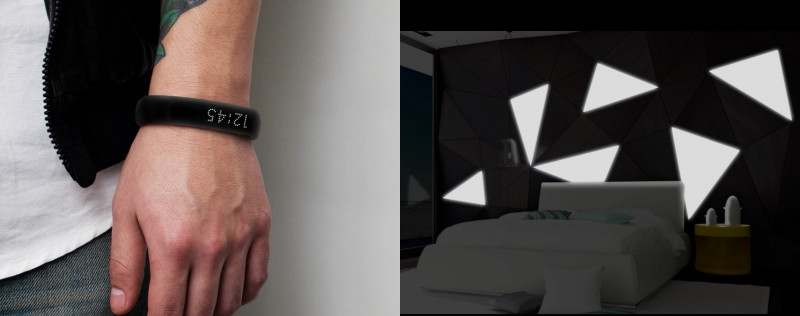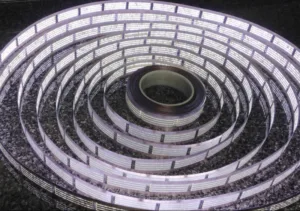The range of enterprises seeking to develop and apply printed inorganic light emitting diodes (LEDs) for lighting and display applications is expanding with some interesting recent developments.
Rohinni with offices in Coeur d’Alene, ID, USA and Austin, TX, USA is one of the newer entrants in this emerging area. As indicated by recent patent filings and the company website, start-up firm Rohinni is aimed at applications of printable inorganic LEDs to displays and to flexible large area “Lightpaper” fabricated using very small LED die suspended in ink and then printed on a conductive layer.
Recent US patent filings by Rohinni describe several applications including: Transmissive lcd display illumination with deposited light-generating sources; Substrate insert molding with deposited light-generating sources; and Keyboard backlighting with deposited light-generating sources. The Rohinni website illustrates several potential applications for their technology including the wristband display and wall mounted lighting application shown in the photos below.
 Source: Rohinni
Source: Rohinni
The Rohinni application examples illustrated abovu suggest that the firm is casting a wide net for product developers who might employ Rohinni’s technology.
Rohinni’s patent applications shed some light on their technical and business approach. For example, the application entitled Transmissive LCD display illumination with deposited light-generating sources includes reference to the terms… “printable light-emitting diodes, or more generally placeable LEDs,” to be called pLEDs. The patent application’s authors also reference US Patent 8,415, 879 which describes Nthdegree Technologies Diode for a printable composition. Nthdegree Technologies have been developing printed LED technology for some time now. The Rohinni technical approach would appear to have some features in common with the Nthdegree printed LED technology. Nthdegree’s product development efforts have delivered flexible printed LED materials such as the roll-to-roll material illustrated below and Nthdegree currently offers the Nth-Light Demo kit in distribution through Mouser.
Source: Nthdegree
Development efforts and product applications of Rohinni’s and Nthdegree Technologies’ approaches to placeable LEDs are occurring in parallel with additional efforts at X-Celeprint , Flexbright and LuxVue which was acquired by Apple in 2014. X-Celeprint’s micro-transfer printing technology has been reported on previously in Display Daily here and here. Flexbright offers what it calls a “hybrid LED-lighting foil” manufactured using roll-to-roll (R2R) printing and R2R bonding processes. The Flexbright process is based on polymer substrate materials, such as PET, PEN, PC and adhesive bonding of LED devices. The Flexbright product is shown in the photo below.
 Source: Flexbright
Source: Flexbright
Finally, since Apple acquired LuxVue, little has been heard concerning the firm’s technical progress on placeable LEDs. However, Apple’s investment alone carries a substantial endorsement of the pLED approach. As this update shows, placeable LEDs can be employed in several distinct fashions to suit differing applications. Further development efforts and future product announcements are likely from multiple directions in the not so distant future. – Phil Wright

